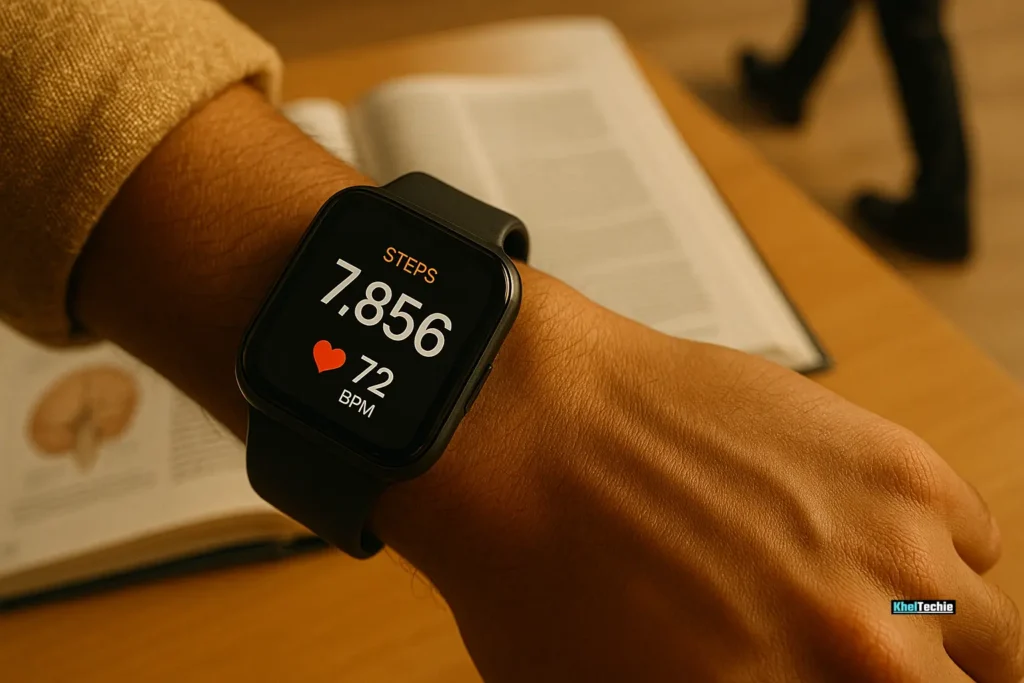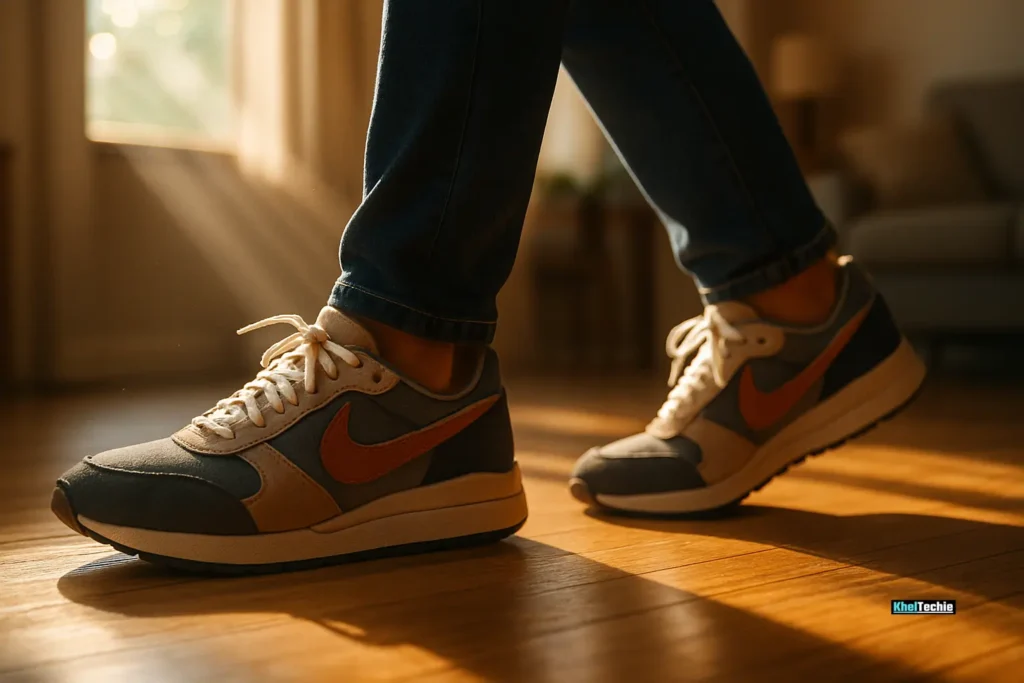Microwalking for Health Insurgence: The Tiny Habit Transforming Wellness
The Big Problem with Sitting Still
You wake up, sit for breakfast, commute sitting, work sitting, relax sitting, and sleep lying down. Sound familiar? Modern life is a sitting marathon, and it’s wreaking havoc on our health. But what if the solution isn’t a gym membership or a 10,000-step goal? Enter Microwalking for Health Insurgence, a simple, science-backed strategy to reclaim your health, one tiny walk at a time.
Also read – Micro-Habits for Daily Wellness Success

What is Microwalking for Health Insurgence?
You know that feeling when you’ve been sitting at your desk all day, scrolling through emails or binge-watching Netflix, and suddenly realize you haven’t moved in hours? Your back aches, your energy dips, and by the end of the day, you feel like you’ve run a mental marathon without even standing up.
Enter microwalking , a simple yet powerful habit that’s quietly revolutionizing how we approach health. And not just any kind of health improvement, it’s part of a growing movement known as health insurgence, where individuals take control of their wellness outside traditional systems.
So what exactly is Microwalking for Health Insurgence?
Think of microwalking as the antidote to sedentary living. It’s the practice of taking short, frequent walks throughout the day, usually 30sec–5 minutes long, to break up prolonged periods of sitting. Whether it’s pacing while on a phone call, walking around your home during a TV commercial break, or doing a quick lap around the office between meetings, these small movements add up.
And when we talk about health insurgence, we’re talking about a grassroots shift toward personal empowerment in health decisions. It’s not about waiting for a doctor’s appointment or relying solely on medications; it’s about making consistent, everyday choices that lead to better physical and mental well-being, like microwalking.
Now, let’s dive deeper into why this matters more than ever.

Why Microwalking for Health Insurgence Matters
The Cost of Sitting Too Long
The average American adult spends over 6 hours a day sitting, according to data from the CDC (Centers for Disease Control and Prevention). That number jumps to 8–10 hours a day for many office workers.
Prolonged sitting has been linked to a host of health issues:
- Increased risk of heart disease
- Higher chances of developing type 2 diabetes
- Poor posture and chronic back pain
- Lower productivity and mood swings
Boosts Metabolism
A study by the University of Milan found that short walking stints (10–30 seconds) can burn up to 60% more energy than longer walks covering the same distance.
Improves Blood Sugar Control
Microwalking can help regulate blood sugar levels, making it beneficial for managing diabetes.
Enhances Mood and Mental Health
Short walks release endorphins, reducing stress and improving mood.
Reduces Risks of Chronic Diseases
Regular movement lowers the risk of heart disease, diabetes, and certain cancers.

How to Start Microwalking for Health Insurgence
Ready to give microwalking a try? Here’s a simple, step-by-step process to help you begin today:
Step 1: Set a Timer or Reminder
Use your phone, smartwatch, or desktop app to remind you to stand and move every 45–60 minutes.
Try apps like StandApp or Time Out (for Mac users) to automate reminders.
Step 2: Decide on Your Walk Duration
Start small, even 1-2 minutes can make a difference.
🕒 Suggested breakdown:
| Time Interval | Walk Duration |
|---|---|
| Every 30 mins | 1 minute |
| Every 45 mins | 2 minutes |
| Every 60 mins | 3 minutes |
Step 3: Choose Your Route
It doesn’t have to be fancy. Just walk around your room, hallway, or backyard. If you’re working remotely, use that time to refill your water bottle or grab a snack.
Step 4: Add a Purpose
Make it meaningful:
- Do a quick stretch while walking
- Call a friend or family member
- Listen to a podcast or audiobook
Step 5: Track Your Progress
Keep a log or use a fitness tracker to see how much you’re moving each day. Celebrate small wins!
📊 Example tracking sheet:
| Day | Total Minutes Walked | Notes |
|---|---|---|
| Mon | 15 | Felt more energized |
| Tue | 12 | Forgot 1 reminder |
| Wed | 18 | Added stretching |

Common Mistakes to Avoid When Microwalking
Even though microwalking seems simple, there are pitfalls that can reduce its effectiveness.
❌ 1. Skipping Breaks During Busy Times
When work gets hectic, it’s tempting to skip your walking break. But that’s when you need it most.
Solution: Schedule microwalking like a meeting, non-negotiable.
❌ 2. Rushing Through It
Walking fast in tight circles won’t do much good. Focus on posture and breathing.
Solution: Walk at a comfortable pace, keeping your shoulders relaxed and head high.
❌ 3. Not Staying Hydrated
Movement increases blood flow, so staying hydrated helps maintain energy levels.
Solution: Keep a water bottle nearby and sip before and after your walk.
❌ 4. Ignoring Pain or Discomfort
If something feels off, stop and assess.
Solution: Consult a physiotherapist or ergonomic specialist if needed.

Why Microwalking Fits Into the Larger Health Insurgence Movement
Health insurgence isn’t just a buzzword, it’s a cultural shift. More people are rejecting passive approaches to health in favor of proactive, personalized strategies.
Microwalking fits perfectly into this framework because:
- It requires no special equipment or gym membership.
- It empowers individuals to make small, sustainable changes.
- It challenges outdated norms about productivity and rest.
That’s the essence of health insurgence, taking charge of your own well-being, one small step at a time.

Scientific Backing Behind Microwalking
Still skeptical? Let’s look at what science says.
As per Business Standard, a study published in the American Journal of Medicine Open concluded that breaking up sitting time with light-intensity walking significantly reduces blood sugar spikes and improves cardiovascular health, even in people who already exercise regularly.

How to Make Microwalking Stick
Like any new habit, consistency is key. Here’s how to keep going:
1. Pair It With Existing Habits
Use triggers you already have:
- Every time you finish an email → walk for 1 minute
- After pouring your morning coffee → walk around the kitchen
2. Use Visual Reminders
Post sticky notes near your workspace or set up a digital wallpaper that says “Move!” every hour.
3. Involve Others
Encourage coworkers or family members to join. Turn it into a game or challenge.
4. Measure and Reflect
At the end of each week, ask yourself:
- Did I feel more energized?
- Was I less stressed?
- Am I looking forward to my next walk?
Also read – 24-Hour Dopamine Reset Challenge

Final Thoughts: Take the First Step Today
Microwalking for Health Insurgence isn’t about perfection, it’s about progress. It’s about recognizing that your health starts with the choices you make every hour, not just once a week.
You don’t need a gym membership, expensive gear, or a complete life overhaul. You just need to take a moment, literally to stand up, breathe, and walk.
So go ahead, Set a reminder, Take a lap And become part of the quiet rebellion that’s changing how we think about health, one step at a time.
Got Questions? Leave a Comment Below!
We’d love to hear your thoughts or experiences with microwalking. And if you found this helpful, please share it with someone who needs a little nudge toward better health.
Note: For visual guidance on incorporating walking into your routine, consider watching this helpful video:
FAQs
What is the ideal duration for a microwalk?
Aim for atleast 10–30 seconds, multiple times a day
What is the best time to do microwalking?
Anytime! But aim to break up sitting every 45–60 minutes. Morning, midday, and post-lunch are great times to reset your energy.
Can I do microwalking at work?
Absolutely, In fact, many offices now encourage “movement breaks” to improve productivity and morale.
How does microwalking help with weight loss?
While not a direct weight-loss tool, microwalking boosts metabolism, improves digestion, and encourages healthier habits over time.
Is microwalking suitable for seniors?
Yes! It’s low-impact and can help improve balance, circulation, and mobility.
Does microwalking count as exercise?
Not in the traditional sense, but it contributes to overall daily activity, which is essential for health.
Can I combine microwalking with other exercises?
Definitely, Think of it as the foundation of an active lifestyle — complement it with yoga, strength training, or cardio.
How long until I notice results?
Most people report increased energy and focus within a week. Physical benefits like improved posture may take a few weeks.
What tools do I need for microwalking?
None! All you need is space and a timer. Optional tools include fitness trackers or reminder apps.
Can microwalking replace regular exercise?
It’s a supplement, not a replacement. Combine it with other activities for optimal health.





Pingback: Brisk Walking For Health Insurrection: Rebel Against Fatigue